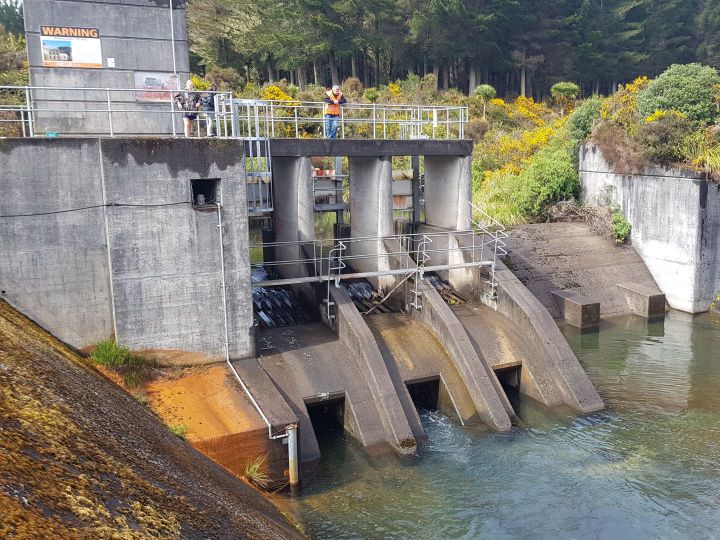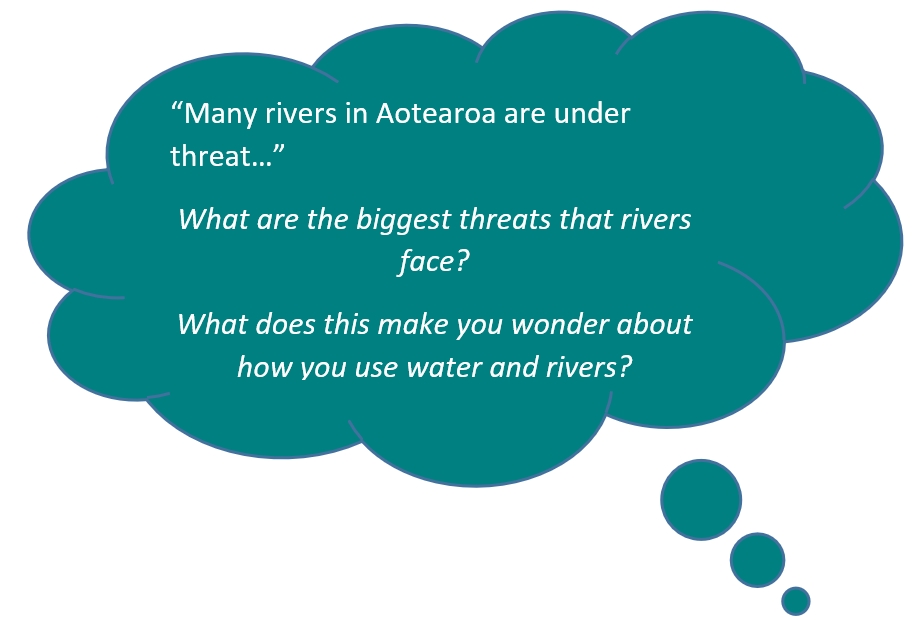You can contact LEARNZ, part of CORE Education, at:
Postal Address:
PO Box 13 678,
Christchurch 8141,
New Zealand
Clearing forests, building dams to supply electricity and pollution have reduced the quality of our rivers.

Before people settled in New Zealand, native forest lined most rivers. These forested riverbanks were home to birds, lizards, slugs, snails, flatworms, earthworms and insects just to name a few. Plants provided shade and food for native fish and kept water temperatures low.
People cutdown large areas of forest for pasture. This removed the shade from river edges, reduced places for many of our native creatures to live, and removed and changed many food sources that those creatures were relying on. Removing forest also increased the amount of erosion so more sediment ended up in rivers.
Daming rivers to generate electricty has flooded some rivers and led to others drying up.
Runoff from farms, cities and industries has polluted some rivers.
With no forest to bind the soil, the land became more susceptible to erosion, often leading to more sediment entering rivers. This sediment threatens water quality and can smoother fish and insects that live in rivers, as well as destroying their homes.
Hydroelectric developments have changed rivers, destroying habitats.
The water quality of many of our rivers has been affected by run off from some farms and industries. Polluted storm water can also enter waterways. You can find out more about stormwater here.
Runoff of fertiliser and animal waste from farms can pollute our waterways. This leads to the loss of different plants and animals that once lived there.

Introduced plants such as pines, blackberry, lupins and hawkweeds are spreading through many riverbanks and beds. Weeds (pest plants) threaten native plants and animals. They smother native plants and compete for food, water, sunlight and nutrients.
Pest animals such as possums, rats, perch, and willow sawfly, also pose a risk to native plants and animals. They kill and feed on many of our native species, but will also compete for food and water.

Heavy rainfall can cause a river to grow in size and create a flood. Floods are New Zealand’s number one hazard. Floods are our most frequent and often most costly natural disaster.
With many of us around New Zealand living next to rivers, there is a need to protect people and their houses from floods, because nobody likes a river flowing through their house. This means that councils have to find ways to help reduce the impacts of flooding.

Ready for a quiz? Try the Threats to Our Rivers interactive activity.
One common option to stop an area from flooding is to build a stopbank alongside the river. Stopbanks contain floods within a certain area, restricting the space rivers can naturally go. The restricted space can change the habitat of the river and also the creatures that live there.
While councils have many different ways of reducing the impacts of a flood, there are also things that you can do yourself at home to help. Check out your local emergency management for more information on flooding in your area and how you can be prepared.